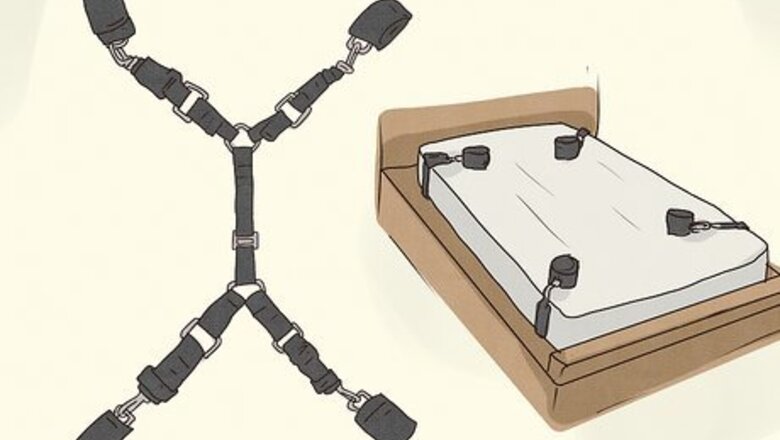
views
Setting the Scene
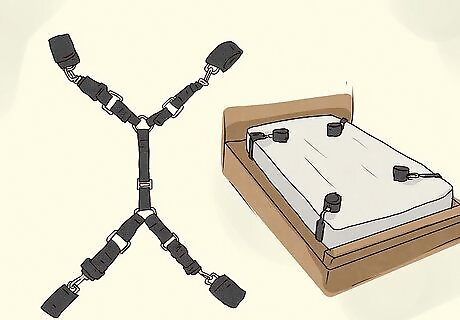
Buy an under-the-bed system for an easier restraint solution. Search online or wherever adult accessories are sold for an under-the-bed restraint system. There are many available at a wide range of prices. The system will still take a little work to set up, but it's not as difficult or complicated as tying rope yourself. Typically, you'll have to remove the mattress completely to put the system in place. There's usually a center anchor and 4 straps that lead to each corner. Pull these taut and replace the mattress on top.
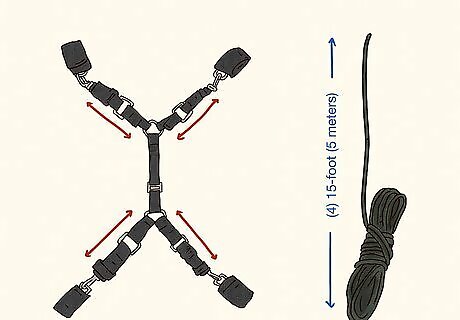
Measure the correct amount of rope for each point if you're tying yourself. You need enough rope to wrap around each post at least once and get to your wrists and ankles. If you're not using cuffs, you also need enough rope to knot and wrap around your wrists and ankles. Having 4 15-foot (about 5-meter) ropes (one for each corner) will usually be sufficient. When using rope, keep in mind that it's always better to have too much than to not have enough. While you can attach two ropes together to extend them, that just complicates things. It's much easier just to have rope the length you need to start with. If you're using an under-the-bed system, you don't have to do this—the straps are adjustable.
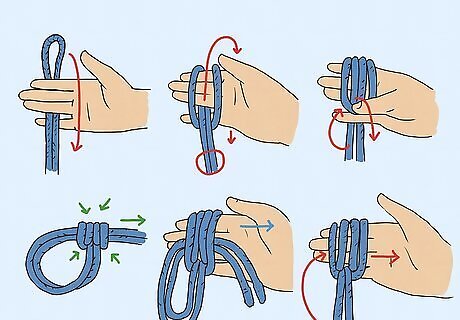
Create a zip snare knot in each of the ropes. Put the 2 ends of a rope together, then follow them down until you find the middle (the "bight"). Run the 2 tails between your pinkie and ring finger, then fold the bight down over your hand (palm facing you). Pull the tails all the way through the bight, then wrap them over the top and back of your hand and pull them through the bight again. Now, take the ends of the rope and run them horizontally through the column of rope around the 4 fingers of your hand. Pull them through, leaving enough to create a loop. Then, slip your fingers out of the column and tighten it around the rope. Zip snare knots work great because they don't slip or collapse once they're in place, so you can struggle or pull against them all you want and not have to worry about pinching a nerve or cutting off your circulation.
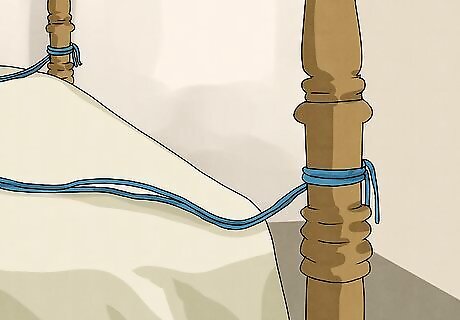
Secure the ropes around each of the 4 points. If you're using rope to tie yourself, wrap it around each of the 4 bedposts and secure it using any knot you like. Even a simple overhand knot can do the trick! Don't have secure bedposts? Use a simple overhand knot to tie 2 ropes together and run them under the top of the mattress so that the ends are sticking out. Do the same thing on the bottom.
Securing the Rope
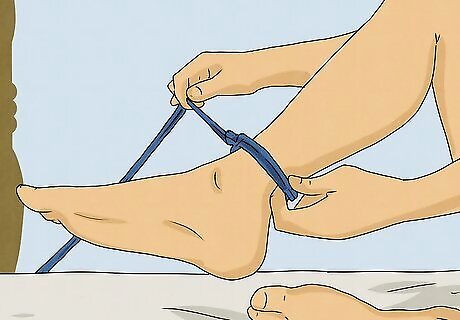
Connect your ankles to the lower points. Since you're self-tying, do your ankles first. It's likely going to be easier to start with your non-dominant side. Once that ankle is secure, move over and secure the other ankle. This does require a bit of flexibility, but if you can touch your toes with your legs spread out, you shouldn't have any problems.
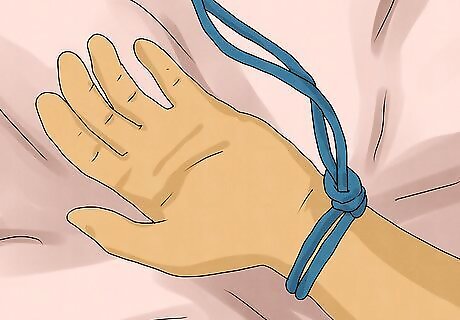
Put your non-dominant hand in the wrist coil or cuff. Lie down on the bed and slide your non-dominant hand into the rope coil or wrap the cuff around your wrist. Use your dominant hand to tighten it. If you're using rope, be careful not to cinch it too tight! Remember, you should be able to easily slip 2 fingers between the rope and your skin.
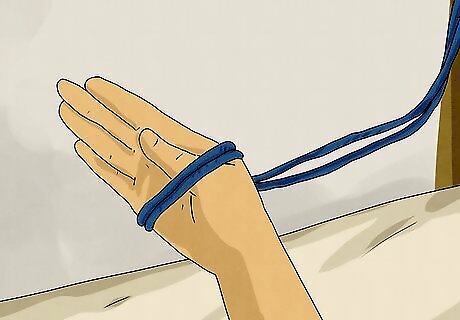
Slide your dominant hand into the final wrist coil or cuff. At last, it's time to set the final piece of your scene in place. When you're ready, work your hand into that last coil or cuff and tighten it up as best you can. Now you have nothing to do but wait for your scene to start—perhaps by your partner coming into the room and "finding you" in this position. If the person who's going to find you isn't within shouting distance, make sure they're only a minute or two from opening the door before you restrain your last arm. If you end up restrained and have to wait too long, it could ruin your mood (and your scene).

Attach one wrist coil or cuff with a padlock for a different escape method. This one requires a little more manual dexterity (and some practice to make sure you can do it under pressure). Use some rope or cord to attach your wrist coil or cuff to the rope or cord that's attached to the point. Then, connect the ends of the rope or cord with a padlock that has a key. Keep the key where you can reach it so you can twist your fingers around and open the padlock if necessary. Make sure the key is in a spot where it's not going to get lost! This is especially important if struggle is part of your scene. You don't want to accidentally knock the key on the floor or have it fall under something and get lost.


















Comments
0 comment